Introduction
Yan Du Xian, a traditional Chinese dish hailing from the Jiangnan (south of the Yangtze River) region, is a culinary gem that combines the earthy flavors of fresh pork, bamboo shoots, and preserved pork (often referred to as “wuxiang” or “fermented pork” in English). This hearty soup is not only a testament to the rich culinary heritage of China but also a delight for the senses, offering a balance of savory, sweet, and umami tastes in every spoonful. While the basic ingredients might seem straightforward, achieving the perfect Yan Du Xian that tantalizes the taste buds requires mastering a few crucial techniques. In this article, we will delve into the secrets that elevate this dish from good to extraordinary.
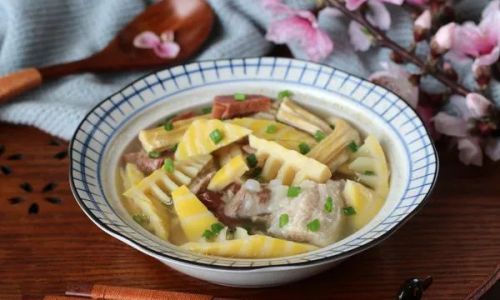
Selecting the Right Ingredients
The foundation of any great dish lies in its ingredients, and Yan Du Xian is no exception. Here are some key pointers for selecting the perfect components:
-
Fresh Pork Ribs or Belly: Opt for pork ribs or pork belly with a good marbling of fat. The fat not only adds flavor but also helps to create a rich, velvety broth. Ensure the meat is fresh, with a bright color and a clean, slightly sweet smell.
-
Bamboo Shoots: Fresh bamboo shoots are preferred, but if unavailable, canned ones can be used. Look for bamboo shoots that are firm, white (or light in color), and devoid of any off odors. Fresh bamboo shoots should be peeled and blanched to remove any bitterness before use.
-
Preserved Pork (Wuxiang Rou): This ingredient is crucial for the unique flavor profile of Yan Du Xian. Choose preserved pork that is well-aged, with a deep, dark color and a strong, fragrant aroma. Avoid pieces that are overly dry or moldy.
-
Stock and Seasonings: A good quality chicken or pork stock can enhance the broth, while ginger, Shaoxing wine, and white peppercorns are essential for seasoning.
Preparing the Ingredients
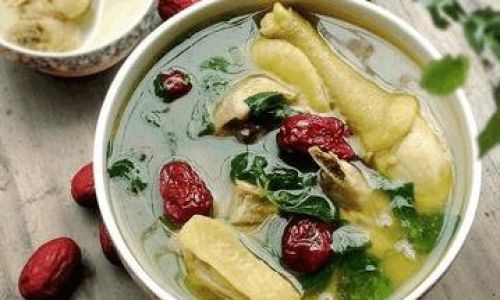
Once you have gathered the right ingredients, proper preparation is vital to ensure that each component contributes its best to the final dish.
-
Blanching the Pork: Blanch the pork ribs or belly in boiling water for about 5-10 minutes to remove impurities and blood. This step also tightens the meat’s surface, preventing it from becoming overly mushy during cooking.
-
Soaking the Preserved Pork: Soak the preserved pork in cold water for about 30 minutes to an hour to soften it and reduce some of its saltiness. This step is crucial as preserved pork can be quite salty and needs to be balanced with the other ingredients.
-
Preparing the Bamboo Shoots: As mentioned, fresh bamboo shoots should be peeled, sliced, and blanched. Canned bamboo shoots can be rinsed under cold water to remove any excess liquid and canned taste.
Cooking Techniques
The cooking process for Yan Du Xian involves simmering, which allows all the flavors to meld together gently. Here’s how to do it right:
-
Simmering Slowly: Place the prepared pork, preserved pork, bamboo shoots, ginger slices, and enough water or stock to cover the ingredients in a large pot. Bring to a gentle boil, then reduce the heat to low and let it simmer slowly. Slow cooking allows the fats and collagen from the pork to break down, enriching the broth with a silky texture and deep flavor.
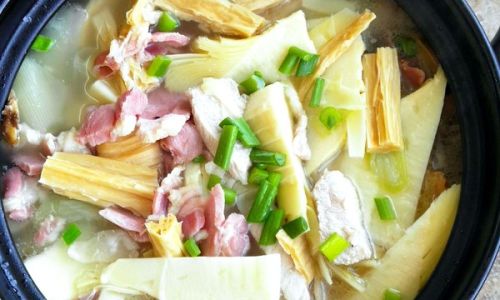
-
Skimming the Fat: Periodically skim off any foam or excess fat that rises to the surface during simmering. This keeps the broth clear and prevents it from becoming too greasy.
-
Adding Seasonings: After about an hour of simmering, add Shaoxing wine and white peppercorns. The Shaoxing wine adds a layer of complexity and sweetness, while the peppercorns provide a subtle heat that balances the rich flavors. Taste and adjust seasoning as needed, but remember that the preserved pork will continue to release its saltiness as it cooks.
Timing is Everything
The cooking time for Yan Du Xian can vary depending on the desired texture of the meat and the intensity of flavor you prefer. Generally, simmering for around 2-3 hours is ideal, but here are some guidelines:
-
For Tender Meat: If you prefer the pork to be very tender and falling-off-the-bone, cook for closer to 3 hours. Keep in mind that overcooking can make the meat mushy, so monitor carefully.
-
For a Richer Broth: If you’re aiming for a more concentrated broth, you can cook for an additional 30-60 minutes after the meat is tender. However, be mindful of not letting the liquid reduce too much, as it can become too salty and concentrated.
Finishing Touches
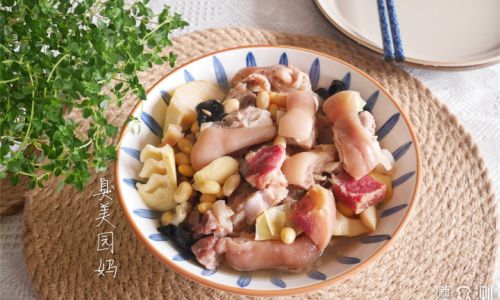
Before serving, there are a few final touches that can elevate your Yan Du Xian to the next level:
-
Adjusting Consistency: If the broth is too thin, you can thicken it slightly by removing some of the meat and vegetables, blending them with a bit of the broth, and then returning the mixture to the pot. If it’s too thick, add a little more water or stock.
-
Garnishing: A sprinkle of chopped green onions or cilantro can add a fresh, bright note to the dish. Some recipes also call for adding a few slices of fresh ginger or a drizzle of sesame oil at the end for an extra layer of flavor.
-
Serving Temperature: Yan Du Xian is best served hot, as the warmth accentuates its flavors. However, it can also be enjoyed at room temperature or slightly chilled, though the texture and taste may differ slightly.
Conclusion
Yan Du Xian is a dish that embodies the essence of Chinese culinary art, combining simplicity with sophistication. By following the key techniques outlined above – selecting high-quality ingredients, preparing them meticulously, cooking slowly with attention to detail, and adding finishing touches that enhance its appeal – you can create a bowl of Yan Du Xian that is not only delicious but also a testament to your culinary prowess. Whether you’re a seasoned chef or a home cook eager to impress, mastering these techniques will ensure that your Yan Du Xian stands out, delighting every palate it touches. So, gather your ingredients, roll up your sleeves, and embark on a culinary journey that promises not just a meal, but an experience. Bon appétit!
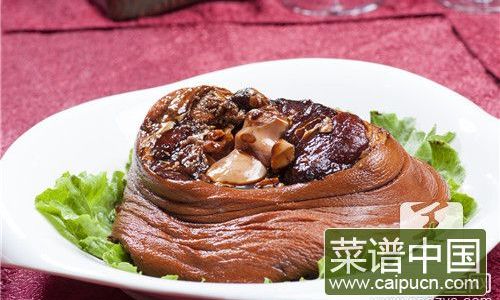




0 comments